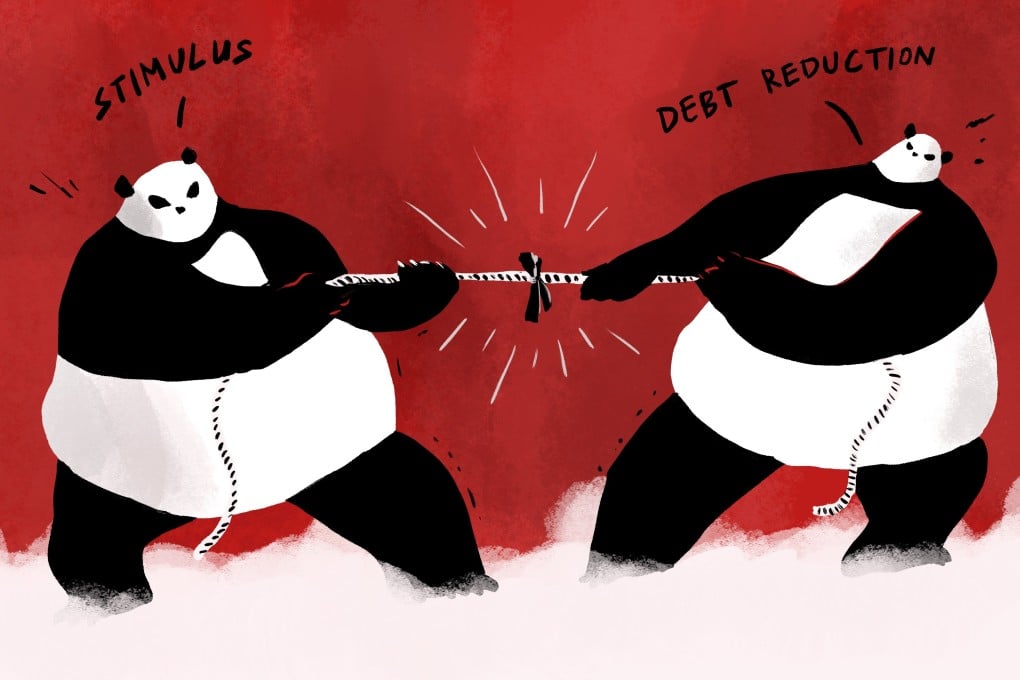China’s ‘two sessions’: leaders must decide whether to scale back economic stimulus as debt risks loom
- World’s second-largest economy rolled out huge economic relief last year, but domestic debt and ‘grey rhino’ risks could threaten China’s financial system
- China is expected to set an economic growth target of about 6 per cent for 2021, but some say it should skip setting a numeric goal for second consecutive year

China’s political elite will face a number of challenges when they gather in Beijing next month for the year’s biggest legislative set piece – the meetings of the National People’s Congress and the Chinese People’s Political Consultative Conference, informally known as the “two sessions”. In this latest part of a series looking at the key items on the agenda, we examine the country’s debt risks associated with last year’s stimulus spending.
China is expected to scale back the coronavirus fiscal stimulus measures it enacted last year, as brighter economic prospects and hopes of improved relations with the United States help shift the government’s attention to domestic debt risks.
Meanwhile, there has been heated debate in recent months as to whether China should resume its decades-long tradition of setting an annual gross domestic product (GDP) target, given uncertainty about the domestic and global economic outlook.
Scaling back economic stimulus would align with the central government’s call for balancing development and security over the next 15 years, with efforts focused on curbing “grey rhino” risks that could threaten the stability of China’s financial system and the nation’s economic development.
“The emergency measures adopted last year have significantly amplified China’s debt risks,” said Wen Laicheng, a professor of fiscal science at the Central University of Finance and Economics in Beijing. “In particular, the local government debt ratio has jumped to an average of 90 per cent [of local GDP], which is close to the red line.”
We must make reasonable arrangements for the fiscal deficit, debt and expenditure policies, and we must take substantial actions to solve local implicit debt risks
